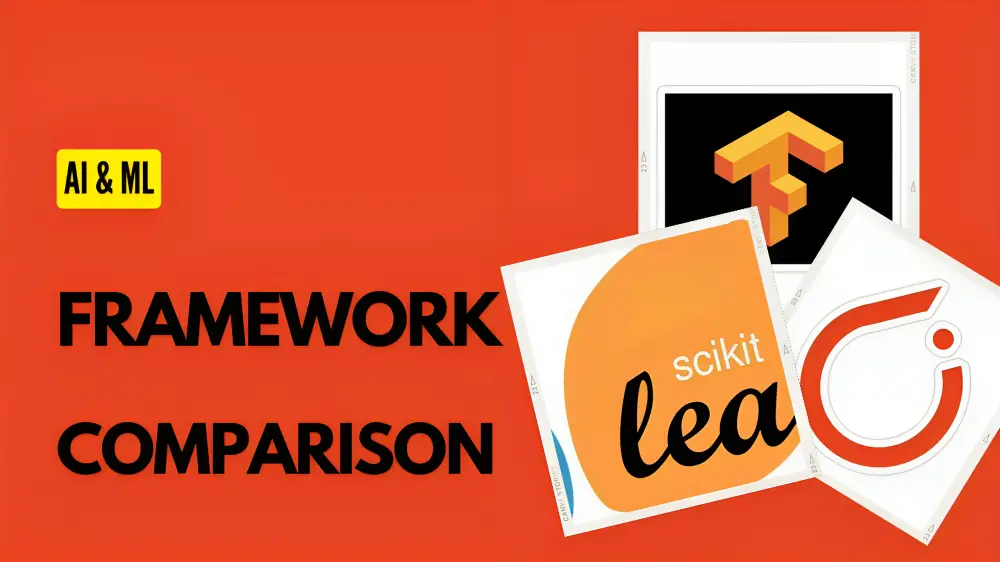Hey there, fellow explorers of the AI universe! We’re about to embark on an epic quest to discover which of these three frameworks is the ultimate superhero.
Join us as we explore the nitty-gritty details, hear some mind-blowing success stories, and dive into the future of these AI powerhouses.
But, wait, this isn’t just about dry statistics and technical jargon. Oh no, we’re gonna make this ride a wild rollercoaster full of AI hijinks, witty puns, and maybe even a few dad jokes (we apologize in advance).
So, put on your lab coats, grab your thinking caps, and get ready to geek out on all things AI. Our trifecta of AI frameworks awaits, each with its own unique flavor and strengths.
– TensorFlow, the OG of AI frameworks, is like the dependable hero of the bunch.
– PyTorch, the fast and flexible framework, is like the slick sidekick.
– And Scikit-learn, the reliable old-timer, is like the mentor of the group.
That’s it? Not Yet!
We’ve got a lot in store for you.
We’re going to cover everything from ease of use and jaw-dropping performance to community support that’s tighter than any fan club and libraries more exciting than a treasure trove of hidden secrets. We’ll also explore how these frameworks shine in different scenarios.
So, let’s jump on this eye-opening comparison of 3 OG frameworks.
But before that, if you want to grow your business checkout this book on Personal Finance By Arthur Keown
Criteria for Comparison
- Ease of Use
- Performance and Scalability
- Community and Support
- Ecosystem and Libraries
- Use-Case Scenarios
Ease of Use
When you’re embarking on an AI adventure, the last thing you want is to get bogged down in a confusing, labyrinthine framework.
You want to hit the ground running, experiment, and bring your AI ideas to life without feeling like you’re deciphering hieroglyphics.
This is where the ease of use of a framework becomes a game-changer.
So, how do TensorFlow, PyTorch, and scikit-learn stack up in terms of beginner-friendliness? Let’s break it down:
TensorFlow
- Ease of Use Rating: ⭐⭐⭐
PyTorch
- Ease of Use Rating: ⭐⭐⭐⭐
Scikit-learn
- Ease of Use Rating: ⭐⭐⭐⭐⭐
Performance and Scalability
In the realm of AI, the performance of your chosen framework can be the difference between a snail’s pace and a cheetah’s sprint.
It’s not just about how fast your models run; it’s also about how well they can handle large datasets and complex computations.
In this section, we’ll explore how TensorFlow, PyTorch, and scikit-learn fare when it comes to performance and scalability.
We’ll unveil which framework excels in blazing through complex tasks and which one takes the lead in handling mountains of data with ease.
Ready to dive into the world of AI performance? Let’s rate each framework:
TensorFlow
- Performance Rating: ⭐⭐⭐⭐⭐
PyTorch
- Performance Rating: ⭐⭐⭐⭐
Scikit-learn
- Performance Rating: ⭐⭐⭐
Community and Support
In the fast-paced world of AI and machine learning, you’re not alone in your journey.
The community surrounding a framework and the level of support available can be your lifelines.
Whether you’re stuck on a coding conundrum or seeking the latest updates, a vibrant community, and responsive support are invaluable.
In this section, we’ll explore how TensorFlow, PyTorch, and scikit-learn measure up in terms of community engagement and the availability of resources and assistance.
Let’s rate each framework for community and support:
TensorFlow
- Community and Support Rating: ⭐⭐⭐⭐⭐
PyTorch
- Community and Support Rating: ⭐⭐⭐⭐
Scikit-learn
- Community and Support Rating: ⭐⭐⭐⭐
Ecosystem and Libraries
An AI framework doesn’t stand alone.
It’s part of a vast ecosystem with libraries and tools that can make your AI projects more efficient, powerful, and fun.
The availability of these add-ons can significantly impact your workflow.
In this section, we’ll explore the ecosystems and libraries of TensorFlow, PyTorch, and scikit-learn to see which one provides the best set of tools to supercharge your AI projects.
Let’s explore the ecosystems and libraries of each framework:
TensorFlow
- Ecosystem and Libraries Rating: ⭐⭐⭐⭐⭐
PyTorch
- Ecosystem and Libraries Rating: ⭐⭐⭐⭐
Scikit-learn
- Ecosystem and Libraries Rating: ⭐⭐⭐⭐⭐
Use-Case Scenarios
In the diverse landscape of AI applications, not all frameworks are created equal.
Each has its strengths and specialties, making it better suited for specific use cases.
Whether you’re diving into computer vision, natural language processing, or structured data analysis, the right framework can be a game-changer.
Let’s explore the use-case scenarios for each framework:
TensorFlow
- Use-Case Scenarios Rating: ⭐⭐⭐⭐⭐
PyTorch
- Use-Case Scenarios Rating: ⭐⭐⭐⭐
Scikit-learn
- Use-Case Scenarios Rating: ⭐⭐⭐⭐⭐
FAQs
1. Which framework is better for deep learning, TensorFlow, or PyTorch?
Both TensorFlow and PyTorch are excellent choices for deep learning. The decision depends on your familiarity with the framework and your project’s specific requirements. TensorFlow is known for its scalability and production readiness, while PyTorch is preferred for research and experimentation.
2. Can I use scikit-learn for deep learning tasks?
Scikit-learn is not the best choice for deep learning tasks. It’s primarily designed for traditional machine learning tasks. For deep learning, TensorFlow or PyTorch would be more appropriate.
3. Is PyTorch better for natural language processing (NLP) tasks?
Yes, PyTorch is well-regarded for NLP tasks due to its dynamic computation graph, which is essential for working with sequences of varying lengths, a common feature of NLP data.
4. Which framework has the most comprehensive documentation?
TensorFlow and scikit-learn have extensive documentation. TensorFlow’s documentation is particularly thorough, making it a valuable resource for users.
5. Can I switch from one framework to another mid-project?
While it’s possible to switch between frameworks, it can be time-consuming and may require rewriting code. It’s best to choose the right framework from the beginning to avoid unnecessary complications.
6. Are there any licensing issues with these frameworks?
All three frameworks (TensorFlow, PyTorch, and scikit-learn) are open-source and available under permissive licenses. You can use them for both personal and commercial purposes without licensing concerns.
Conclusion
Oh, we have come to the end of this exciting blog post, and what a journey it has been! We’ve ventured into the dynamic world of AI frameworks, comparing the powerhouse TensorFlow, the dynamic PyTorch, and the reliable scikit-learn.
You now have a clear map to navigate the AI landscape, considering factors like performance, ease of use, community and support, and use-case scenarios.
As you stand at the crossroads of AI, remember that the right framework is your compass to innovation.
It should align with your project’s unique needs and your aspirations. Embrace the best practices, recommendations, and future developments, and know that the world of AI is ever-evolving, just like your potential.
Now, the torch is passed to you. Which framework resonates with your AI dreams? Do you have any burning questions or insights to share? Feel free to comment below, and let’s keep the conversation alive.
Thank you for joining us on this exhilarating journey of exploration. Your AI adventure awaits, and we’re here to accompany you every step of the way.


